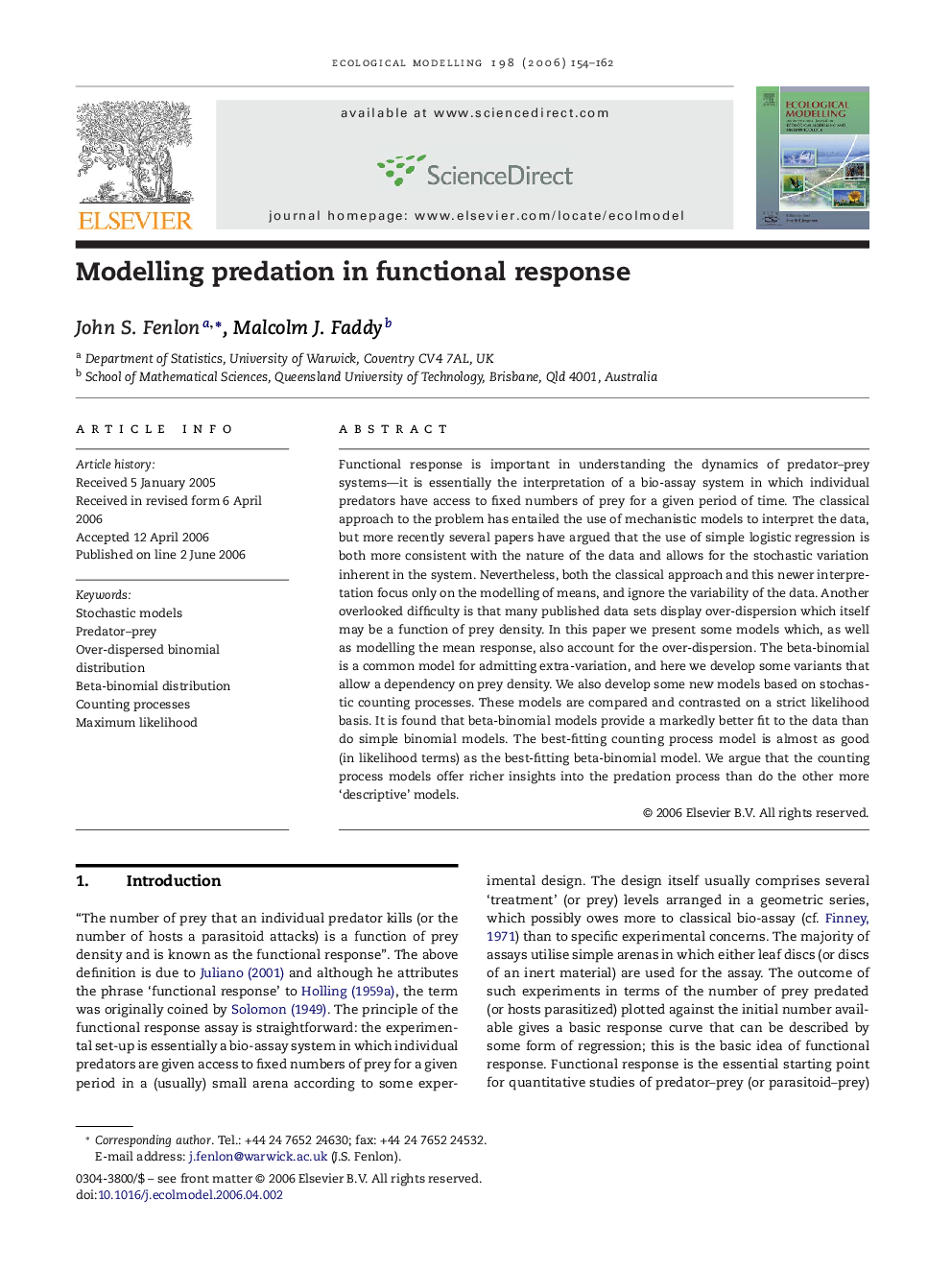| کد مقاله | کد نشریه | سال انتشار | مقاله انگلیسی | نسخه تمام متن |
|---|---|---|---|---|
| 4378843 | 1617558 | 2006 | 9 صفحه PDF | دانلود رایگان |

Functional response is important in understanding the dynamics of predator–prey systems—it is essentially the interpretation of a bio-assay system in which individual predators have access to fixed numbers of prey for a given period of time. The classical approach to the problem has entailed the use of mechanistic models to interpret the data, but more recently several papers have argued that the use of simple logistic regression is both more consistent with the nature of the data and allows for the stochastic variation inherent in the system. Nevertheless, both the classical approach and this newer interpretation focus only on the modelling of means, and ignore the variability of the data. Another overlooked difficulty is that many published data sets display over-dispersion which itself may be a function of prey density. In this paper we present some models which, as well as modelling the mean response, also account for the over-dispersion. The beta-binomial is a common model for admitting extra-variation, and here we develop some variants that allow a dependency on prey density. We also develop some new models based on stochastic counting processes. These models are compared and contrasted on a strict likelihood basis. It is found that beta-binomial models provide a markedly better fit to the data than do simple binomial models. The best-fitting counting process model is almost as good (in likelihood terms) as the best-fitting beta-binomial model. We argue that the counting process models offer richer insights into the predation process than do the other more ‘descriptive’ models.
Journal: Ecological Modelling - Volume 198, Issues 1–2, 15 September 2006, Pages 154–162